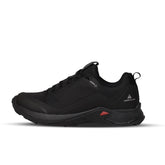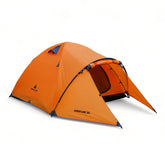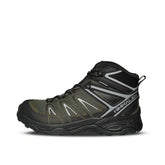Hiking Shoes vs Trekking Shoes: What’s the Difference ?
When you're planning an adventure into the great outdoors, choosing the right footwear can make or break your experience. Many people often use the terms hiking shoes and trekking shoes interchangeably, but they are designed for different purposes. In this guide, we’ll explore the key differences between hiking shoes vs trekking shoes to help you make an informed choice.
What Are Hiking Shoes?
Hiking shoes are designed for short, relatively easy hikes. They are usually lightweight, flexible, and provide decent grip on well-marked trails. Their low-cut design allows better ankle mobility, making them perfect for day hikes or casual walks in nature. They are breathable and often come with water-resistant materials .

What Are Trekking Shoes?
Trekking shoes, on the other hand, are built for tougher terrains and longer journeys. They offer more durability, better grip, and stronger support for carrying heavier backpacks. These shoes are typically high-cut to offer ankle support and are made with rugged materials to handle all kinds of weather and rough conditions.

| Feature | Hiking Shoes | Trekking Shoes |
|---|---|---|
| Purpose | Light trails and day hikes | Long-distance and rugged treks |
| Weight | Lightweight | Heavier for durability |
| Cut | Low-cut for ankle mobility | Mid to high-cut for ankle support |
| Material | Breathable, flexible | Tough, weather-resistant |
| Support | Basic cushioning | Strong arch and ankle support |
| Best For | Beginners, short treks | Experienced trekkers, multi-day trips |
Key Differences Between Hiking Shoes vs Trekking Shoes
-
Design & Weight: Hiking shoes are light and easy to wear, while trekking shoes are heavier due to their reinforced construction.
-
Support & Cushioning: Trekking shoes offer better support and shock absorption, ideal for rocky, uneven surfaces.
-
Ankle Protection: Most trekking shoes come with ankle protection, which is crucial for multi-day hikes with a heavy load.
-
Durability: Trekking shoes last longer under challenging conditions compared to hiking shoes.
When to Choose Hiking Shoes
-
For weekend hikes or short day treks
-
When you want something lightweight and comfortable
-
On well-marked trails with mild terrain
When to Choose Trekking Shoes
-
For longer, more challenging treks
-
When carrying a trekking backpack with gear
-
In mountainous or unpredictable terrains
Tips for Choosing the Right Pair
-
Always try the shoes with the socks you plan to wear during your hikes.
-
Make sure there’s enough room for your toes.
-
Check if the sole has good grip and flexibility.
-
Waterproof options are better for unpredictable weather.
Conclusion
Understanding the difference between hiking shoes vs trekking shoes helps you select the perfect pair for your journey. Whether you’re going on a light trail or a Himalayan expedition, the right footwear ensures comfort, safety, and an enjoyable adventure. Invest in the right pair and let your feet thank you on the trail!






